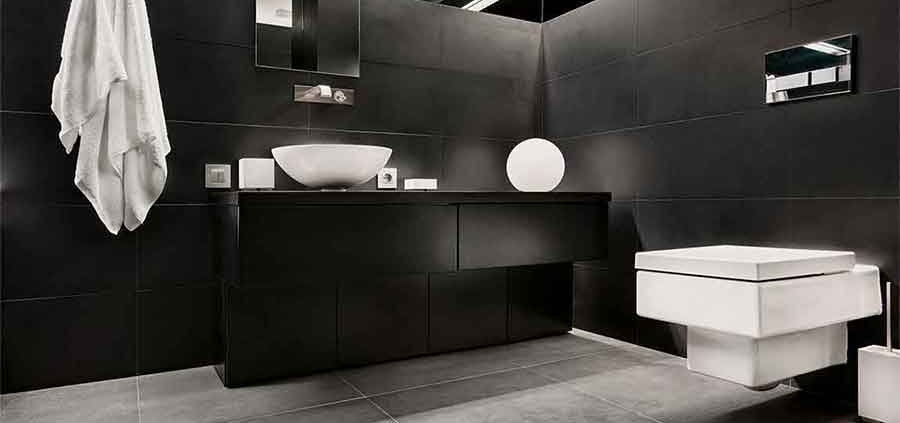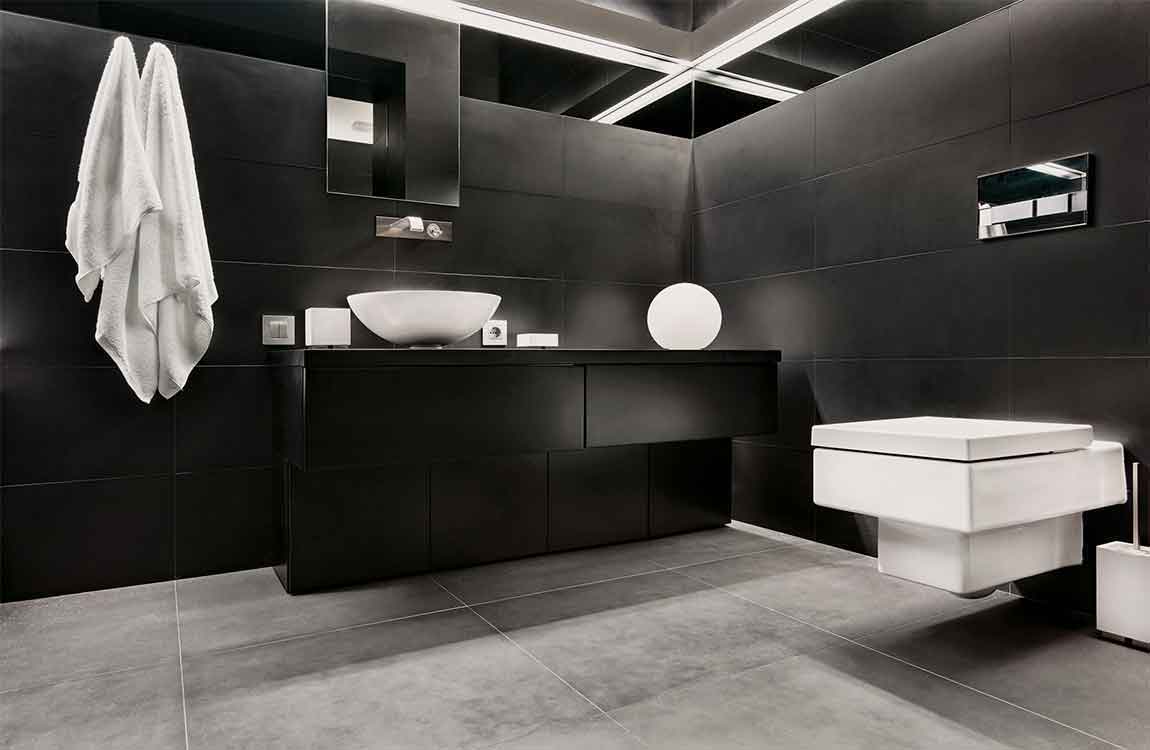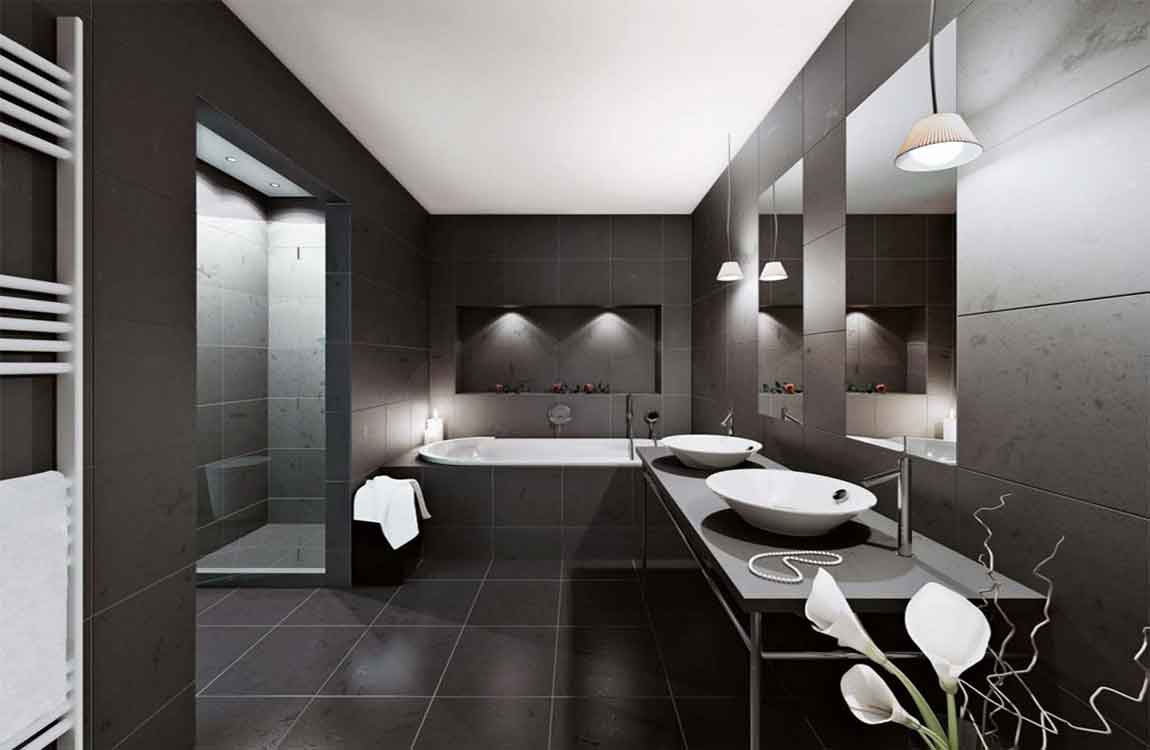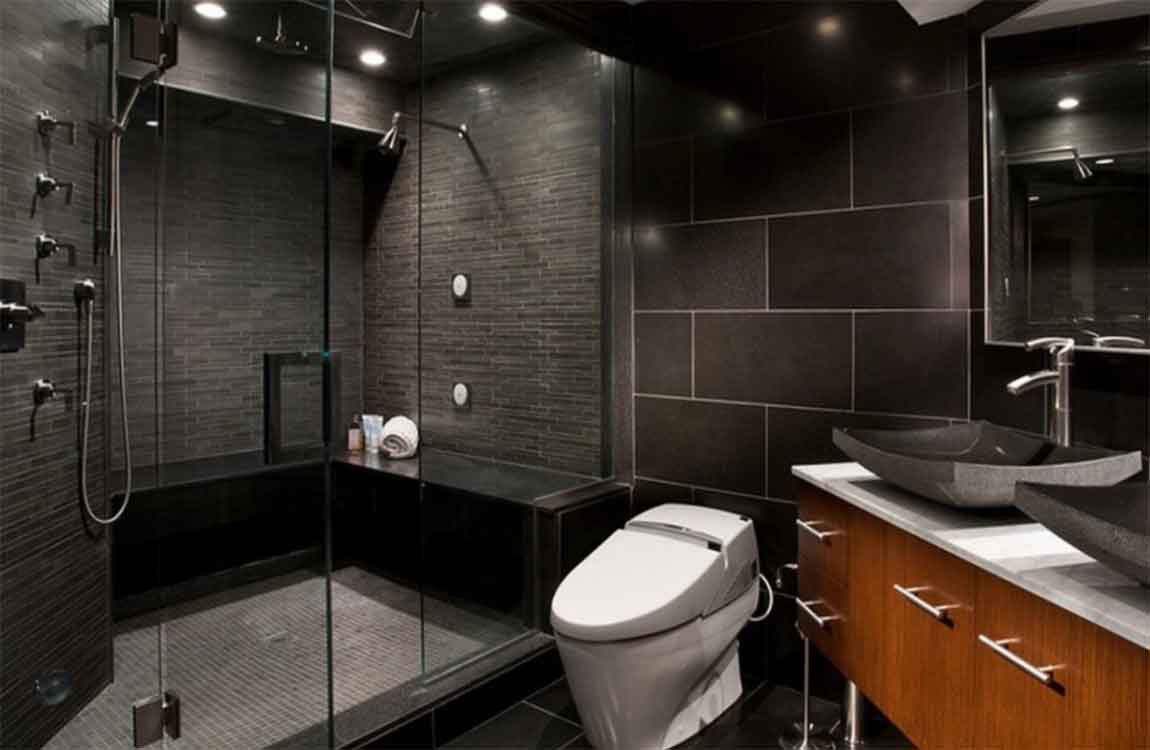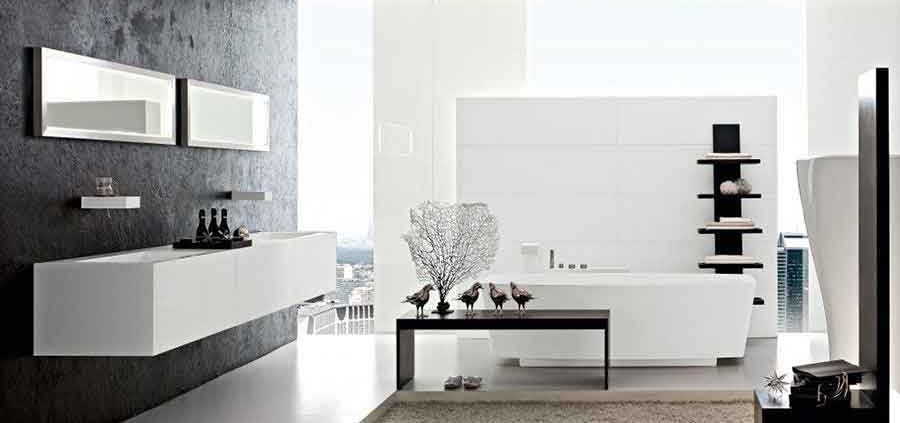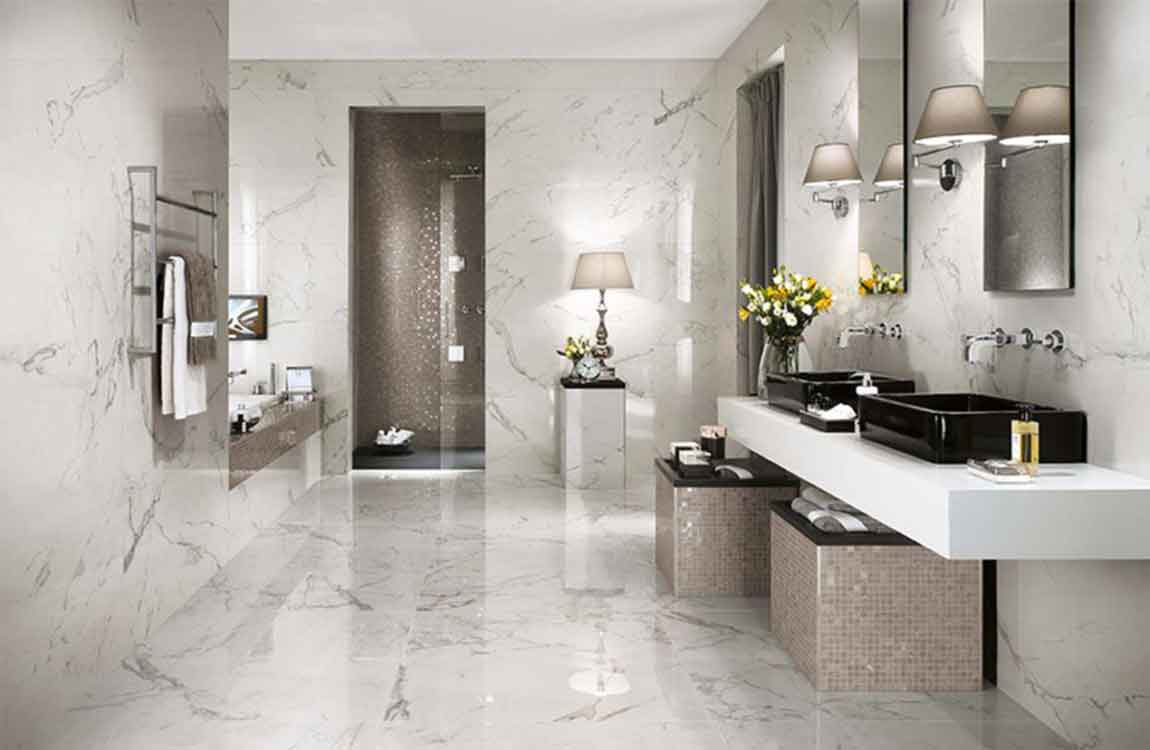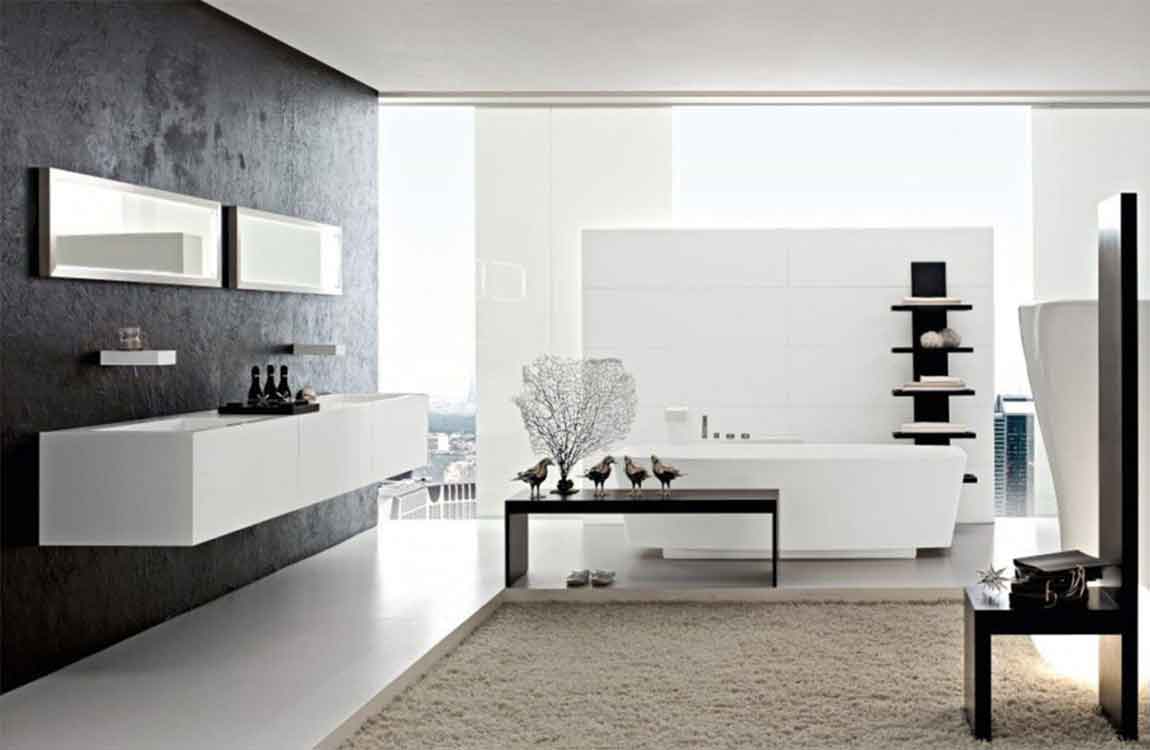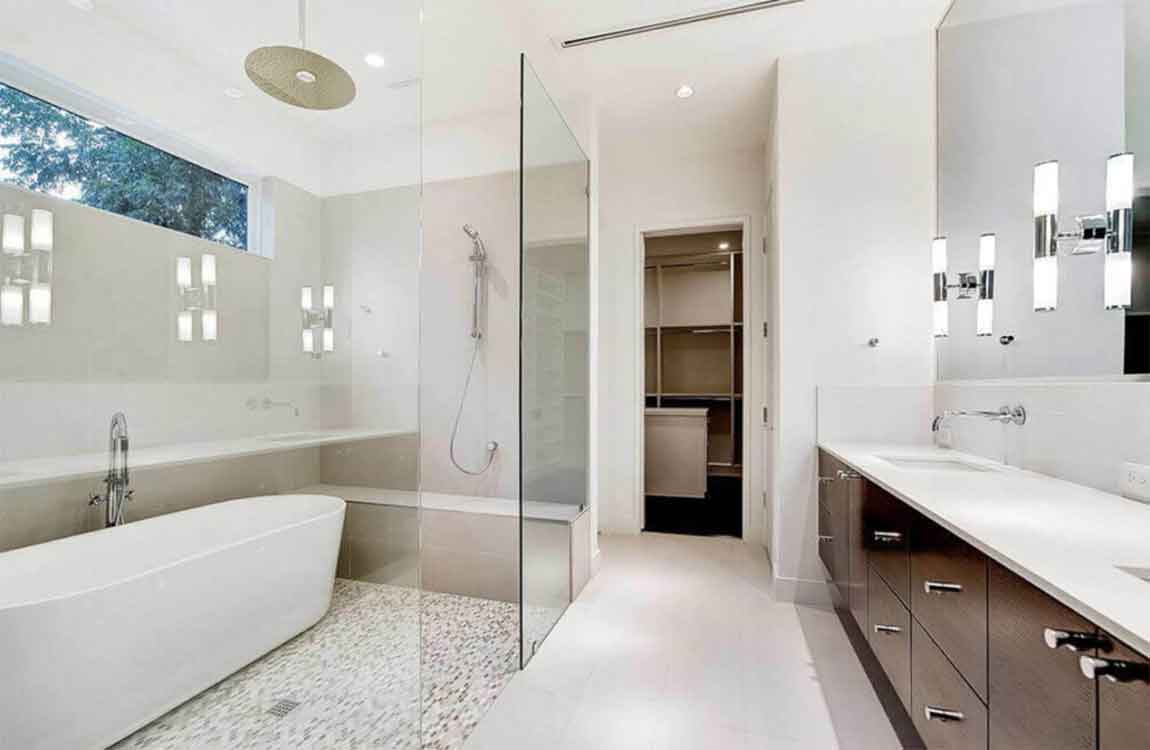How to Use Circulating Light in a Black Bathroom?
Featuring a bit of black in your bathroom decor can add class and excitement to the room’s ambiance. Black paint, for instance, can be used for quick, striking renovations. There are other ways to incorporate black in the bathroom as well, including reflective black tile. In fact, using mirrors and features to help circulate light will make a bathroom with black features stay both beautiful and inviting.
Use reflective material for black walls. If you’re envisioning a bathroom with black walls, it’s important to use a material that will reflect light and create an inviting, comfortable atmosphere. For instance, walls of black tile will be far more enlivening than walls that are simply painted black. Either porcelain or ceramic tiles will work. For an even cleaner, sleeker look, consider using sheets of black glass to wall your bathroom.
Avoid using too much black. Imagine a room in which everything is black. It would simply not be a comfortable room. Psychologically, in fact, too much black can cause occupants to feel claustrophobic. Further, black absorbs light, so too much black can make a room dark and unwelcoming.
Use shiny fixtures and accents. White bathroom fixtures aren’t the only way to add light and shimmer to a darkly-colored bathroom. Incorporate plenty of glass and metal as well. The more reflective the material, the better. Chrome faucets and glass handles, for instance, can add a vibrant feel to bathroom with a lot of black.
A variety of materials can also help fight the tendency for darker rooms to feel a bit dreary at times. Feature mirrors prominently. One of the best ways to maximize light, especially in a dark room, with with a large mirror. A wide sink mirror, especially with built-in lighting, is ideal. Another option is adding a floor-length mirror to the bathroom, or replacing cabinet doors with swing-out mirrors.

